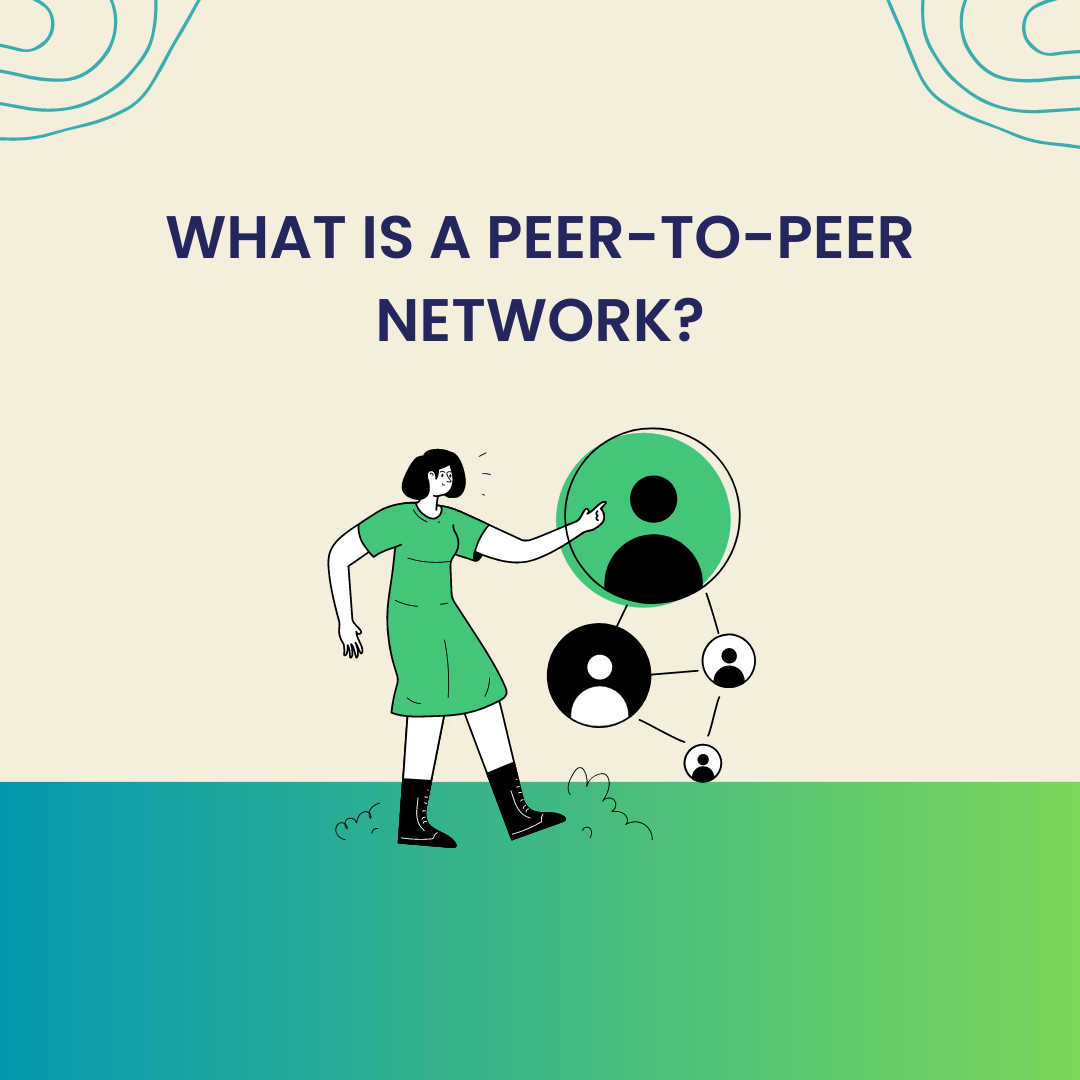A peer-to-peer network is a decentralized computer network architecture where participants in the network, called peers, act as both clients and servers simultaneously.
Unlike a traditional client-server network, where a central server facilitates communication and data sharing, a P2P network allows individual nodes (peers) to directly connect and interact with each other.
In a P2P network, each peer has equal capabilities and can initiate and respond to requests for resources or services. Peers can share files, collaborate, and exchange information without relying on a centralized authority or infrastructure.
This distributed approach enables greater scalability, fault tolerance, and resilience as the network can continue to function even if some nodes fail or leave.
Key characteristics of a Peer-to-Peer Network network include
- Decentralization: There is no central server controlling the network or regulating interactions. Peers connect directly to each other without relying on intermediaries.
- Symmetry: Peers in the network have the same capabilities, functions, and responsibilities. Each peer can act as a client by requesting resources and as a server by providing resources to other peers.
- Resource Sharing: Peers can share files, data, or computational resources directly with other peers in the network. This allows for efficient distribution and utilization of resources.
- Autonomy: Peers have control over their own resources and decide which resources they want to share with others. They can set permissions, restrict access, or allocate bandwidth as per their preferences.
- Scalability: P2P networks can scale easily as each new peer joining the network contributes to its resources and capabilities. The network can grow in size without requiring additional centralized infrastructure.
- Redundancy and Resilience: Peer-to-Peer networks are inherently resilient to failures or attacks as the absence of a single point of failure allows for distributed storage and redundancy. If one peer goes offline, the network can still function using other available peers.
- Network Discovery: Peers in a Peer-to-Peer Network need a way to discover and connect with each other. Network discovery mechanisms include centralized trackers, distributed hash tables (DHT), or peer-exchange protocols. These mechanisms enable peers to locate and establish connections with other peers in the network.
- Bandwidth Utilization: In a Peer-to-Peer Network, the bandwidth for file sharing or resource exchange is contributed by the participating peers.
As peers download files or data, they also upload the same content to other requesting peers, creating a collaborative sharing environment. This distributed nature of bandwidth utilization helps in efficient and faster file transfers.
- Dynamic Nature: Peers in a Peer-to-Peer Network can join or leave the network at any time without disrupting the overall network functionality. This dynamic nature allows for flexible scalability and adaptability. New peers can easily enter the network and start participating while departing peers do not affect the network’s operation.
- Hybrid Models: P2P networks can also incorporate hybrid models, combining elements of both P2P and client-server architectures.
In these models, specific components or functions may be centralized while others are decentralized. This approach allows for leveraging the benefits of both architectures based on the specific requirements of the application.
- Security and Trust: Peer-to-Peer Networks present unique security challenges due to the lack of central authority or control. Peers need to rely on trust mechanisms, such as reputation systems or cryptographic techniques, to ensure the authenticity and integrity of shared resources.
Additionally, measures like data encryption, firewalls, and secure communication protocols are necessary to protect sensitive information in P2P networks.
- Legal Considerations: P2P networks have faced legal challenges due to the potential for copyright infringement and the sharing of unauthorized or pirated content. Several legal battles and regulations have emerged in response to copyright violations facilitated by P2P file sharing.
It is essential for businesses or individuals operating P2P networks to be aware of and comply with relevant copyright laws and intellectual property regulations.
- Blockchain Technology: P2P networks form the basis for blockchain technology, which is a distributed and decentralized ledger system. In a blockchain network, peers collaborate to validate and record transactions, creating a transparent and tamper-resistant system.
Blockchain networks rely on P2P communication and consensus mechanisms to maintain the integrity of the ledger.
- Collaboration and Innovation: P2P networks promote collaboration and innovation by enabling individuals or organizations to share knowledge, resources, and ideas directly with each other.
This peer-to-peer collaboration has facilitated the development of open-source software, academic research sharing, and collaborative platforms that foster creativity and collective problem-solving.
P2P networks have been widely used for various applications, including file sharing, content distribution, communication platforms, and decentralized cryptocurrency systems (e.g., Bitcoin).
Notable examples of P2P protocols include BitTorrent for file sharing and the InterPlanetary File System (IPFS) for distributed file storage.
It’s important to note that while P2P networks offer advantages in terms of decentralization and resource sharing, they may also present challenges related to security, privacy, and the control of unauthorized content.
Proper measures need to be in place to ensure the integrity and safety of data shared within a P2P network.
In summary, P2P networks offer a decentralized and collaborative approach to resource sharing, allowing peers to directly connect, interact, and exchange information. They have revolutionized various domains, providing scalable, resilient, and efficient solutions for file sharing, communication, and distributed systems.
While they come with their own set of challenges, P2P networks continue to drive innovation and reshape how we interact and share resources in the digital world.




